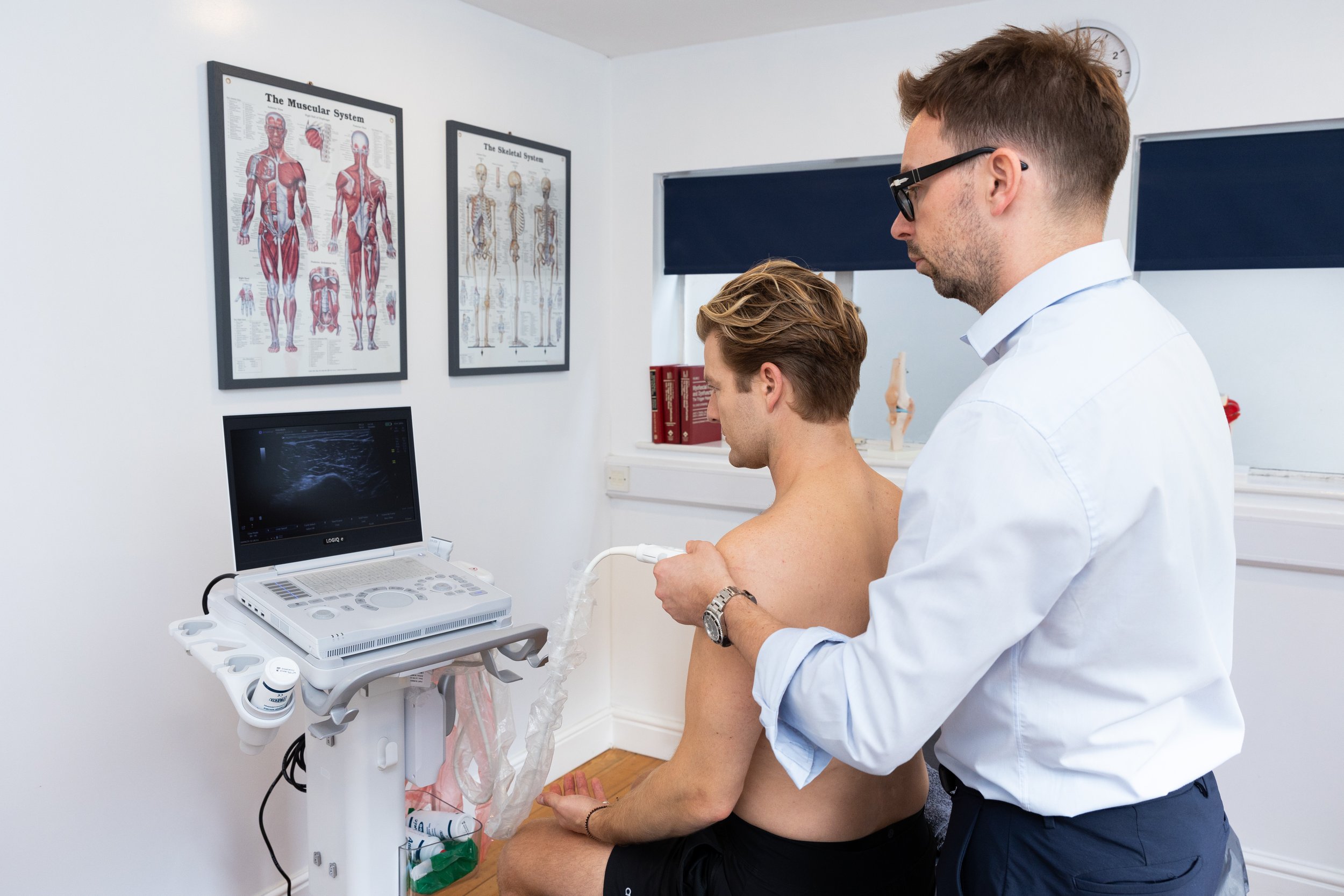What is Musculoskeletal Diagnostic Ultrasound?
Diagnostic ultrasound (often called musculoskeletal ultrasound) uses high-frequency sound waves transmitted through a handheld probe to create live images of soft tissues: muscles, tendons, ligaments, nerves, and joints. A water-based gel helps the probe glide smoothly on your skin. The returning sound waves are processed into detailed, real-time images, allowing dynamic evaluation including movement and stress testing during the scan.
This method is safe, non-invasive, and radiation-free, making it ideal for repeated use, quick results and patient-friendly care.
Your assessment will be carried out by a clinician with specialist training in musculoskeletal ultrasound, combined with a detailed osteopathic evaluation. This integrated approach provides a clearer picture of your condition and helps achieve a more accurate diagnosis.
Conditions diagnosed by Ultrasound
At OsteoBath, we use diagnostic ultrasound to assess a wide range of musculoskeletal issues, including but not limited to:
Shoulder : Rotator cuff tendinopathy, bursitis, AC joint pathology
Foot & Ankle: Plantar fasciitis, tendon problems, ligament injury
Knee: Patellar or quadriceps tendinopathy, osteoarthritis, bursitis, joint effusion, Baker’s cyst, collateral ligament injury
Elbow: Tennis elbow, golfer’s elbow, biceps tendon injury, bursitis
Hand & Wrist: Tenosynovitis, scapholunate injury, carpal tunnel syndrome
Ultrasound is as accurate as MRI in many soft tissue diagnoses, especially for tendon and ligament injuries. It is also valuable for detecting nerve impingements and tracking how tissues heal over time. Additionally, it supports precision in treatments like dry needling and shockwave therapy.
What Ultrasound can’t detect
While highly effective for many conditions, musculoskeletal ultrasound does not provide reliable assessment for:
Spinal structures and deeper trunk or pelvic areas (e.g., cervical, thoracic, lumbar spine)
Abdominal issues, such as hernias or internal lumps
Subcutaneous lumps or masses not involving musculoskeletal tissue
In such cases, we will carefully refer you for more appropriate imaging like MRI, CT, or ultrasound in another context.
How the service works
Select Diagnostic Ultrasound consultation via our online booking system, or you can give us a call.
During your in-clinic appointment, we'll perform a thorough assessment combined with real-time ultrasound scanning.
We'll discuss findings with you and guide you toward the most effective treatment plan.
What if my scan appears normal?
It’s quite common to have pain even when the ultrasound shows no visible structural changes such as tears, ruptures, or swelling. If this happens, your clinician will discuss the findings with you in detail during your appointment and advise whether any additional tests or imaging are necessary to investigate further.

